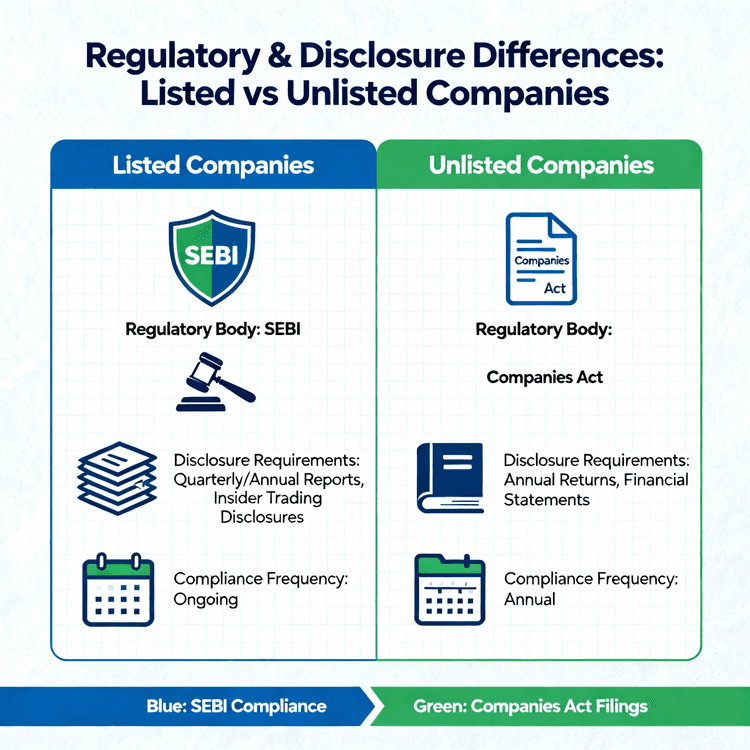As India’s financial markets prepare for one of the most anticipated listings in recent years, National Securities Depository Limited (NSDL) has already carved out a significant valuation in the unlisted grey market. With shares trading at ₹1,085 in May 2025, investors implicitly ascribe NSDL a P/E multiple of 63.3× on its FY25 trailing EPS of ₹17.15. This premium reflects a blend of its dominant institutional franchise, unpriced optionality in new ventures, and the scarcity value of unlisted stock.
Yet, markets are by nature dynamic. Small shifts in investor sentiment, regulatory developments, or execution outcomes can swing NSDL’s P/E multiple, and thus its implied price. In this deep-dive, we walk through four illustrative P/E scenarios, 55×, 63.3× (current), 65×, and 75×, all tied back to EPS bases, to map out NSDL’s potential price bands. More importantly, we explore the qualitative forces behind each multiple, so that investors can calibrate their expectations not just on raw arithmetic but on the real-world catalysts that drive valuation.
The Baseline: From Earnings to Price
Before exploring the bands, it’s crucial to establish how P/E translates to price. NSDL’s FY25 numbers stand as follows:
Net Profit (PAT): ₹343 crore
Shares Outstanding: 20 crore
EPS (FY25): ₹343 cr ÷ 20 cr = ₹17.15
For forward multiples, we lean on our FY26E EPS of ₹20.05, which assumes 17% profit growth driven by institutional volume ramp-up, Payments Bank break-even, and digital mandates (see our detailed growth thesis elsewhere).
Depending on whether we use trailing EPS (₹17.15) or forward EPS (₹20.05), the same P/E yields very different implied prices. This interplay between “which EPS” and “which multiple” can lead to confusion if not laid out transparently. Our table below crystallizes the core scenarios:
Note: The 55×, 65x and 75× bands use FY26E EPS (₹20.05) to reflect forward multiples, whereas the 63.3× current uses trailing FY25 EPS (₹17.15).
Defensive Case (55× P/E → ₹1,103)
A 55× multiple on forward EPS equates to approximately ₹1,103 per share, only slightly above today’s ₹1,085 grey-market price. This “bear-case” or defensive band represents a scenario where:
➢ Scarcity Premium Erodes: When NSDL finally lists, the built-in 15–25% unlisted “IPO pop” expectation will diminish. Investors shift from grey-market illiquidity to a free float, and multiples tend to compress by 5–10× purely on the removal of scarcity.
➢ Payments Bank Underperformance: If NSDL’s JV bank misses break-even or shows minimal PAT contribution in FY26, the envisioned upside for cross-sell to 3 crore demat clients evaporates. A 55× multiple implies the market has effectively written off significant bank optionality.
➢ Regulatory Overhang Returns: SEBI or the government could impose tougher fee caps on depositories, especially if competitive neutrality concerns around NSDL’s institutional ownership resurface. Under such scrutiny, NSDL’s high-margin e-governance streams might be curtailed.
➢ Market Turnover Stagnate: A broader slowdown in Indian equities—even global shocks—could keep institutional volumes muted. As NSDL derives 70–80% of income from transaction and maintenance fees, any volume slump directly hits earnings.
In sum, a 55× forward P/E is not a reflection of disastrous fundamentals but rather a “reset” to a conservative valuation once half the optionality and scarcity premium is stripped away. At ₹1,103, investors would still own a company growing mid-teens with an 86% market share in demat assets, but priced close to the lower bound of plausible multiple ranges.
Optimistic Case (65× Forward P/E → ₹1,303)
Stepping up to a 65× multiple on forward EPS implies an implied share price of roughly ₹1,303. This “optimistic” band assumes:
➢ Payments Bank Thrives: Beyond mere break-even in FY26, the bank could deliver ₹30–50 crore of PAT, validating NSDL’s cross-sell strategy. With 3 crore demat accounts as a captive base, even a modest 2–3% deposit conversion rate could represent ₹1,000 crore+ in deposits, delivering high return on equity.
➢ Digital Mandates Accelerate: Regulatory pushes—like mandatory e-Sign for government filings or expanded e-Voting rules—could boost annuity revenue by 20–25% rather than the 10% we conservatively forecast. If Academic Depository usage doubles faster than expected, FY27 EPS could beat forecasts.
➢ Fee Hikes Approved: NSDL might secure permission to raise fees on high-value corporate actions (IPO processing, rights issues) by 10–15%, translating to incremental revenues of ₹50–75 crore annually. In an infrastructure-light business, that directly feeds bottom-line leverage.
➢ Market Sentiment Remains Bullish: A continuing run in Indian equities—owing to strong GDP growth and FPI inflows—keeps transaction volumes surging. Institutional flows remain robust, fueling both trading fees and annual maintenance charges (AMC).
In this scenario, investors prize NSDL as not only a stable utility but also a high-growth fintech operator. Paying 65× forward earnings (₹20.05) at ₹1,303 reflects confidence in NSDL’s ability to seamlessly integrate its digital ventures into a cohesive, high-margin platform.
Bull Case (75× Forward P/E → ₹1,504)
At the far end, a 75× forward P/E projects NSDL at an eye-popping ₹1,504. Though such exuberance seldom lasts, it might arise under these conditions:
➢ Regulatory Panacea: All governance issues from 2018 co-location case are deemed settled; SEBI formally endorses NSDL’s ownership structure. No further regulatory overhang on clearing-subsidiary cross-shareholdings emerges.
➢ Expanding Ecosystem: NSDL secures new mandates—such as tokenization of securities or digital bonds—that add ₹100–150 crore in incremental top line by FY28.
➢ Global Index Partnerships: In addition to Japanese and Korean Nifty ETF listings, NSDL licenses its index technology to major US and European platforms, adding a new $5–10 million annual revenue stream.
➢ Tech-Driven Cost Leverage: Advanced automation in KYC and corporate actions slashes processing costs, driving EBITDA margins above 80% and lifting ROE to >20%.
Under such near-perfect execution, NSDL morphs into a global digital-infra firm, commanding multiples akin to high-growth Software-as-a-Service (SaaS) businesses. While this bull case lies at the extreme, it demonstrates the theoretical ceiling investors might pay for perceived zero risk and maximum optionality.
In an environment where multiples are influenced as much by narrative as by numbers, NSDL’s valuation bands offer a structured way to frame upside and downside. Each scenario is grounded in the same fundamental EPS base, with shifts driven by how investors perceive execution risk, regulatory clarity, and growth optionality. As NSDL transitions from unlisted to listed status, keeping a close eye on these catalysts—and their impact on where the P/E multiple settles, will be critical for capturing the full spectrum of potential returns.


